|
|
||||||||||||||||||||||||||||||||||||||||||||||||||||||||||
|
Please sign my Guestbook and leave feedback |
||||||||||||||||||||||||||||||||||||||||||||||||||||||||||
|
Recent Additions |
||||||||||||||||||||||||||||||||||||||||||||||||||||||||||
|
Misericords, on the whole, were a monastic thing. Forced to observe eight masses per day (and night!) in monasteries often deliberately located in inhospitable locations, monks who were often frail and arthritic literally needed all the support they could get. Many misericord ranges you see today in parish churches were rescued from dissolved monasteries, priories and collegiate churches and were presumably considered ideal for church choirs. But Nantwich was not a monastic church. Nor was, for example, the famous Boston Stump whose sixty two misericords surpass even those in Nantwich. How do we explain this? Well, I think that we need always to temper our beliefs about what was and was not the “done thing” in parish churches. Just as stonemasons and carpenters left evidence of distinctly local craft traditions in our parish churches, we should not ever rule out the capriciousness and hubris of those who were patrons of those churches. There was no “rule” about where misericords should or should not be provided. So some parish church patrons clearly just wanted them. Perhaps it was because they too wanted to spare the limbs of some of their congregation and clergy. Or perhaps they wanted them because they seemed prestigious. Perhaps sometimes the carpenter just said “How about a few misericords, Guv’nor? St Fred’s has got a few and they look really nice”. I am convinced that often what you see in a church is often down to simple human interactions like that. Misericords and elaborate choir stalls have no liturgical significance: they are just furnishings. And how many homes have furnishings that are slightly hubristic or bizarre? A house my partner and I bought had a “bar” (removed before we moved in!) with as many types of drink as the local pub, and even had optics for spirits! Use by choirs and clergy seems a plausible explanation. But Boston has sixty-two misericords. That seems far to many for those kinds of usage. I think the clue to what is happening is possibly in the wealth of these two towns: one from salt, the other as a very rich port. That wealth was mercantile wealth, not that of traditional aristocratic patronage. The patronage, in other words, was dispersed amongst several men, not to mention the mercantile guilds and the religious gilds. We should not suppose that these were humble men: the likelihood is that they expected to be housed in the chancel, not with the great unwashed in the nave. They might even have paid for the privilege. Nicholas Orme in his indispensable book “Going to Church in Medieval England” (Yale 2021) notes over-provision of chancel seating in Balsham in Norfolk (twenty five misericords), Leighton Buzzard in Bedfordshire and Beverley (parish church) in Yorkshire (twenty three misericords) as well as in Boston and says ”These were potentially available for important layfolk: one can envisage patrons and lords of the manor using them, or the mayor and council of Boston doing so as their colleagues did in Kings Lynn, Sir Thomas More is recorded as sitting in the chancel of Chelsea church while his wife sat in the nave....” So we should not imagine the stalls at Nantwich full of choir singers but, rather, of nouveaux riches salt merchants - with or without their wives! Indeed, it far from fanciful to suppose that provision of privileged seating was an inducement offered to a potential patron by the clergy. The misericords here are a mixture of the familiar and the esoteric. The “familiar” could be said to be utterly predictable in any substantial misericord range: the mermaid, the pelican in her piety, St George and the Dragon are all here. Not far behind them in terms of probability is a wife assaulting her husband with a ladle and that is here too. Quite why these designs are so ubiquitous, I don’t know but everyhing points to craft traditions being a very big deal in mediaeval England. There seem to be no difference in the tradition between monastic and non-monastic churches: the carpenters ploughed the same furrow irrespective of who employed them it seems. For descriptions of what is being depicted I am relying on GL Remnant’s “A Catalogue of Misericords in Great Britain” (OUP 1969). It is long out of print and a very hard book to track down so if you see one secondhand at less than óG50 and you like misericords grab it quickly! |
||||||||||||||||||||||||||||||||||||||||||||||
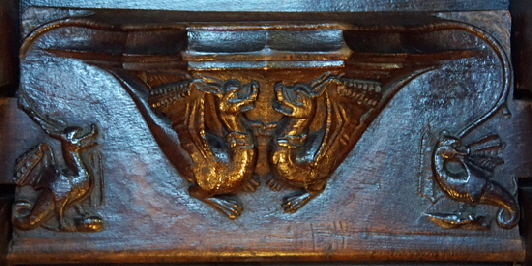 |
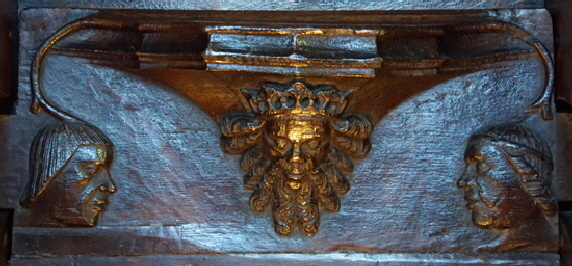 |
|||||||||||||||||||||||||||||||||||||||||||||
|
Left: Another very common misericord design: two wyverns face to face. The supporters are also wyverns. Right: A crowned head with huge curled beard. This tii is a very common misericord motif, So much so, in fact that I would suggest that it has its origins in mediaeval folklore. Human heads are the supporters. |
||||||||||||||||||||||||||||||||||||||||||||||
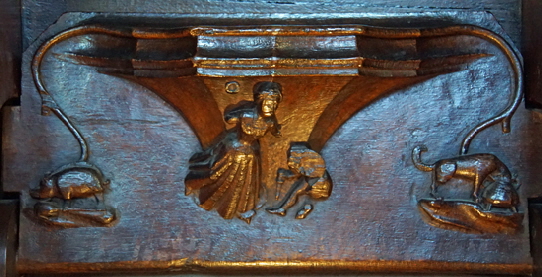 |
 |
|||||||||||||||||||||||||||||||||||||||||||||
|
Left: This is perhaps the most damaged of the misericords but this was almost certainly the wife beating her husband with a ladle. You can see the unfortunate man’s lower half in a somewhat cowed posture and the real giveaway is that the scoop of the ladle has survived behind the wife’s head. The supportes are good fun: on the left is a boar and on the right a dog has his head in a cooking pot. Ladle time for you shortly, Fido! Right: The ubiquitous Pelican in her Piety. On either side is a bird with its prey. |
||||||||||||||||||||||||||||||||||||||||||||||
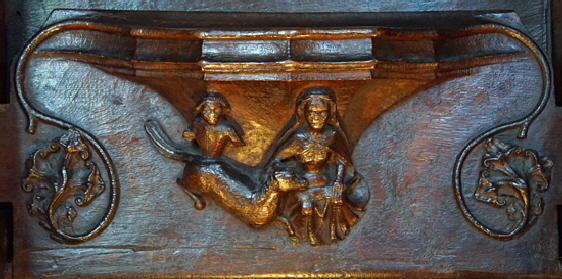 |
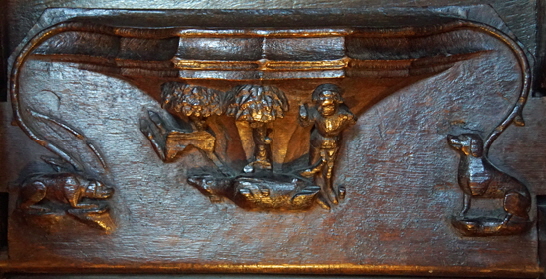 |
|||||||||||||||||||||||||||||||||||||||||||||
|
Left: According to Remnant, this is the Capture of the Unicorn. The pagan legend was that a unicorn could only be captured by a virgin and this was seen as an allegory between Christ and the Virgin Mary. I was going to say that this doesn’t look much like a Unicorn but then what does a Unicorn actually look like? Well anyway, I can’t see a horn! Right: Hunters skinning a stag according to Remnant although it is badly damaged. Hounds provide the supporters. |
||||||||||||||||||||||||||||||||||||||||||||||
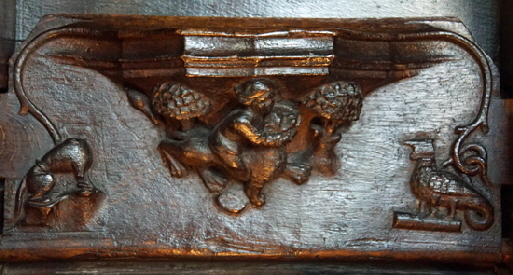 |
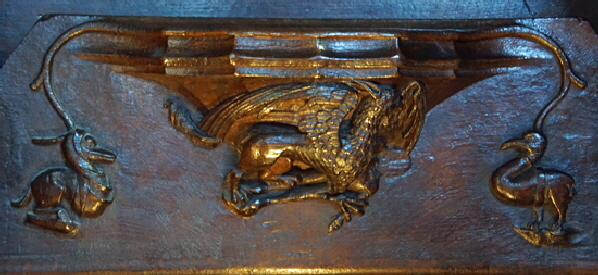 |
|||||||||||||||||||||||||||||||||||||||||||||
|
Left: Samson rides the Lion. This carpenter had a strange way of depicting trees! A dog is the left supporter, a cockatrice the right according to Remnant. Right: A griffin sits astride a prone man in armour. The grotesque supporters look rather like dodos! |
||||||||||||||||||||||||||||||||||||||||||||||
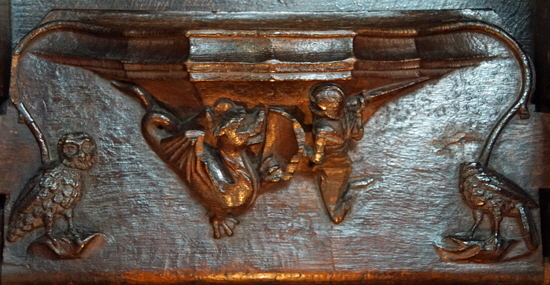 |
 |
|||||||||||||||||||||||||||||||||||||||||||||
|
Left: The inevitable St George and the Dragon. Right: This is not exactly a ubiquitous misericord but the carpenters did love to represent the Devil dealing with vocal sins of women, often portraying them as gossips (surely not?). He Who Shall Not be Named was often represented with monstrous dragon-like wings. Here he is pulling a woman’s mouth open for lying. Well, that’s what Remnant says anyway. I thought the Devil would have been pleased? The supporters are deer feeding on leaves. |
||||||||||||||||||||||||||||||||||||||||||||||
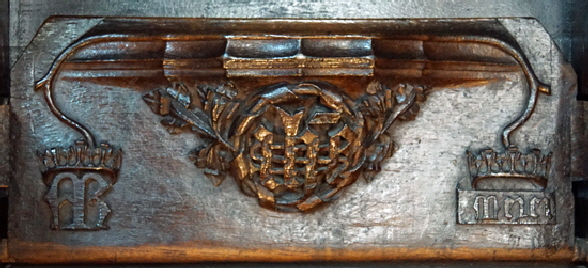 |
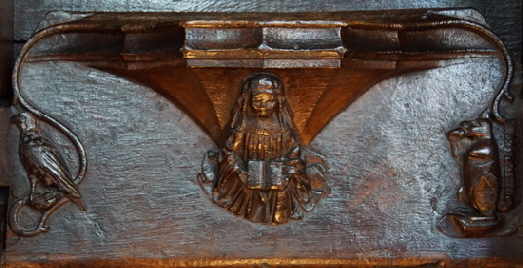 |
|||||||||||||||||||||||||||||||||||||||||||||
|
Left: The IHC monogram. According to Remnant the supporters show Lombardic lettering without suggesting why. “MR” and “MERCI” both appear beneath crowns. Right: A woman reading a book. This is an unusually prosaic theme. She is wearing a widow’s neckcloth so maybe that has something to do with it. The supporters are a bird and a begging dog. |
||||||||||||||||||||||||||||||||||||||||||||||
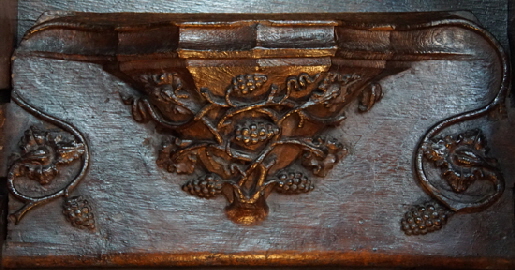 |
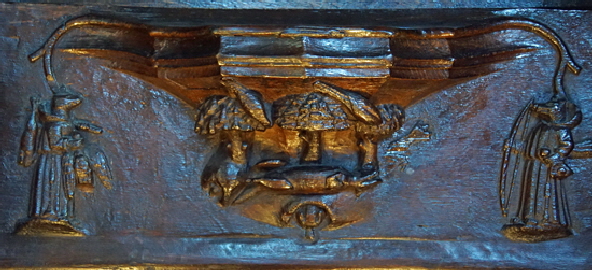 |
|||||||||||||||||||||||||||||||||||||||||||||
|
Left: Vine with Grapes - a frequent piece of Christian symbolism. Right: This is an odd one. You can see birds above those chunky old trees. Below them, a fox is feigning dead. His intentions are not good. The supporters here are actually more interesting than most of the subjects in this misericord range. Both are foxes standing on their hind legs. This is a real carpenter’s favourite, a great way to represent deceitful human beings, especially clergymen and physicians! On the left the fox has what Remnant calls “spoils” and on the right he is carrying a bow and arrow. Innocuous enough, you might feel. But the foxes are dressed as friars! So I think we are seeing an attack on the perceived worldliness of this particular branch of clerics! I think the carpenters got a pretty free hand with what they carved, especially on the undersides of misericords, but I can’t help feeling that the clerical incumbents of the church were probably quite chuffed at this little satire on their rivals. |
||||||||||||||||||||||||||||||||||||||||||||||
 |
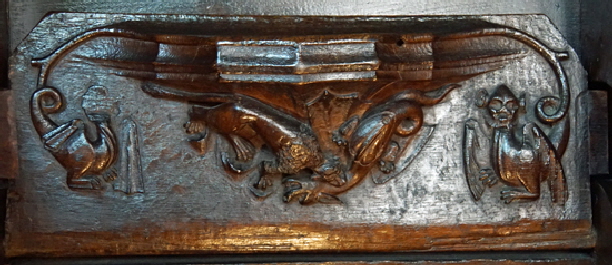 |
|||||||||||||||||||||||||||||||||||||||||||||
|
Left: A run of the mill foliate scene with stylised roses of York or Lancaster as supporters. Right: A dragon attacking a creature emerging from a shell. Fantastical creature form the supporters. |
||||||||||||||||||||||||||||||||||||||||||||||
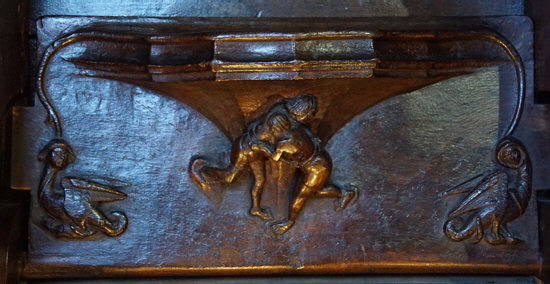 |
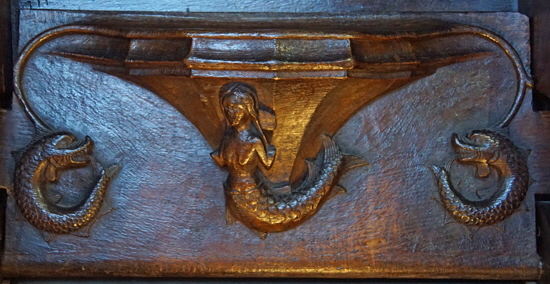 |
|||||||||||||||||||||||||||||||||||||||||||||
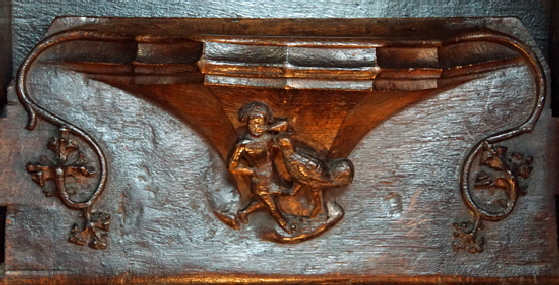 |
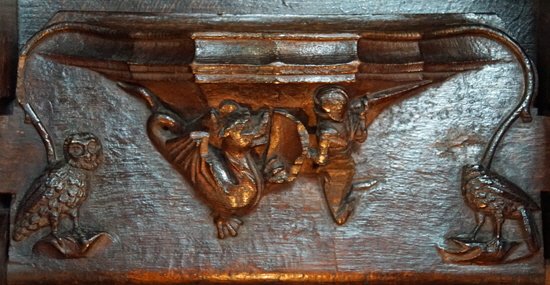 |
|||||||||||||||||||||||||||||||||||||||||||||
|
For the sake of completeness, these are the four misericords I show on the main page. Upper Left: The wrestlers. Upper Right: The Mermaid. Lower left: A man takes a cockerel to the cockfight. Lower Right: George and the Dragon. |
||||||||||||||||||||||||||||||||||||||||||||||
|
Close-Ups |
||||||||||||||||||||||||||||||||||||||||||||||
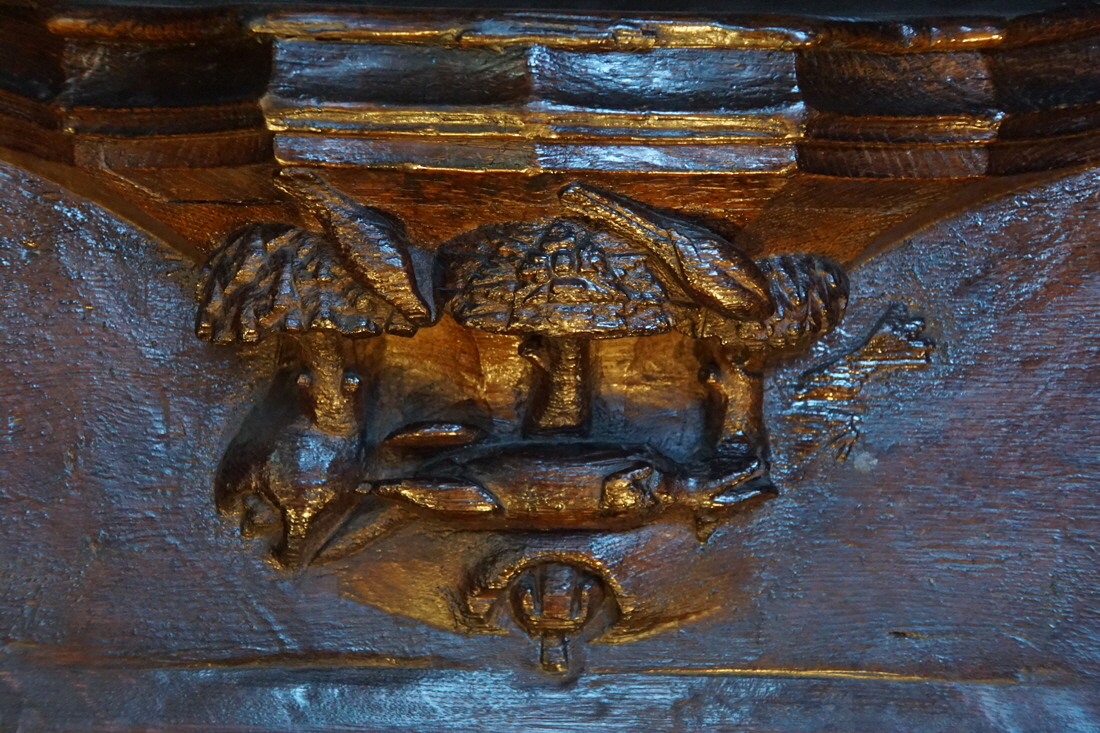 |
||||||||||||||||||||||||||||||||||||||||||||||
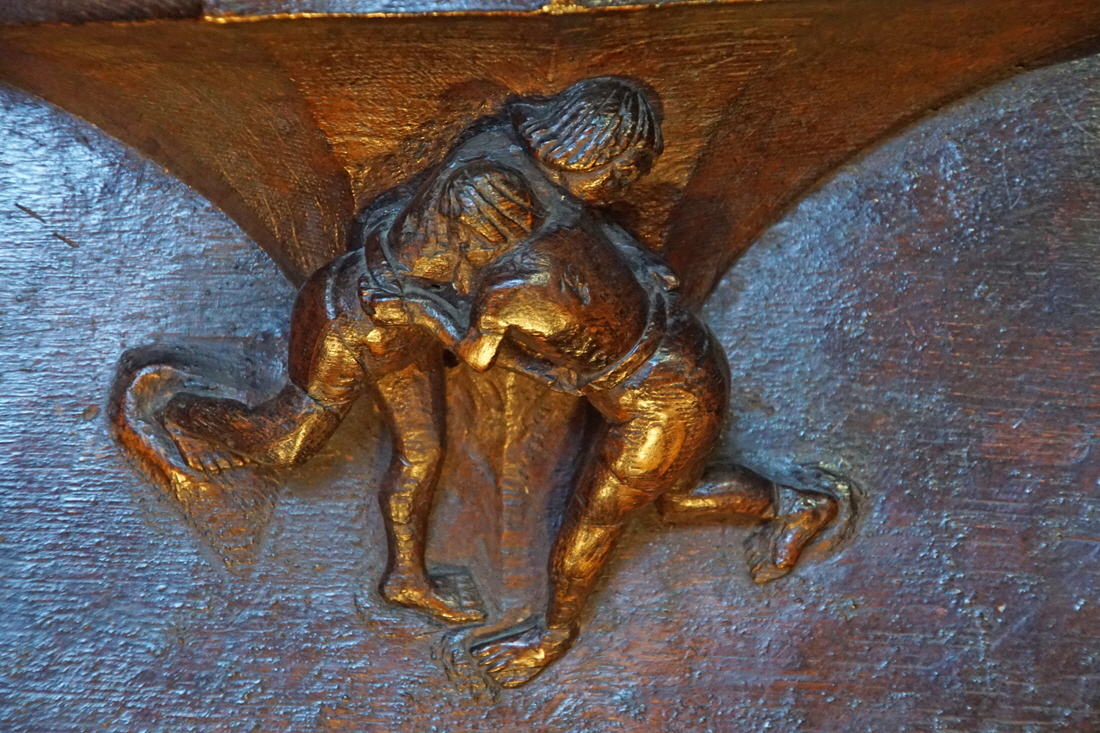 |
||||||||||||||||||||||||||||||||||||||||||||||
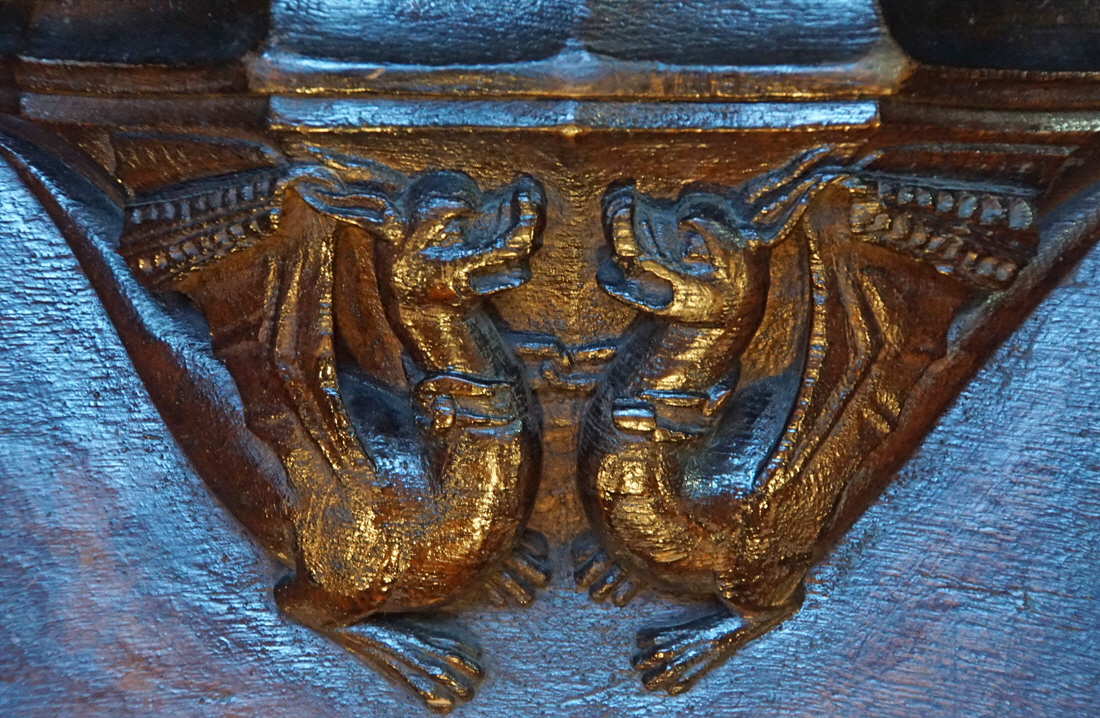 |
||||||||||||||||||||||||||||||||||||||||||||||
 |
||||||||||||||||||||||||||||||||||||||||||||||
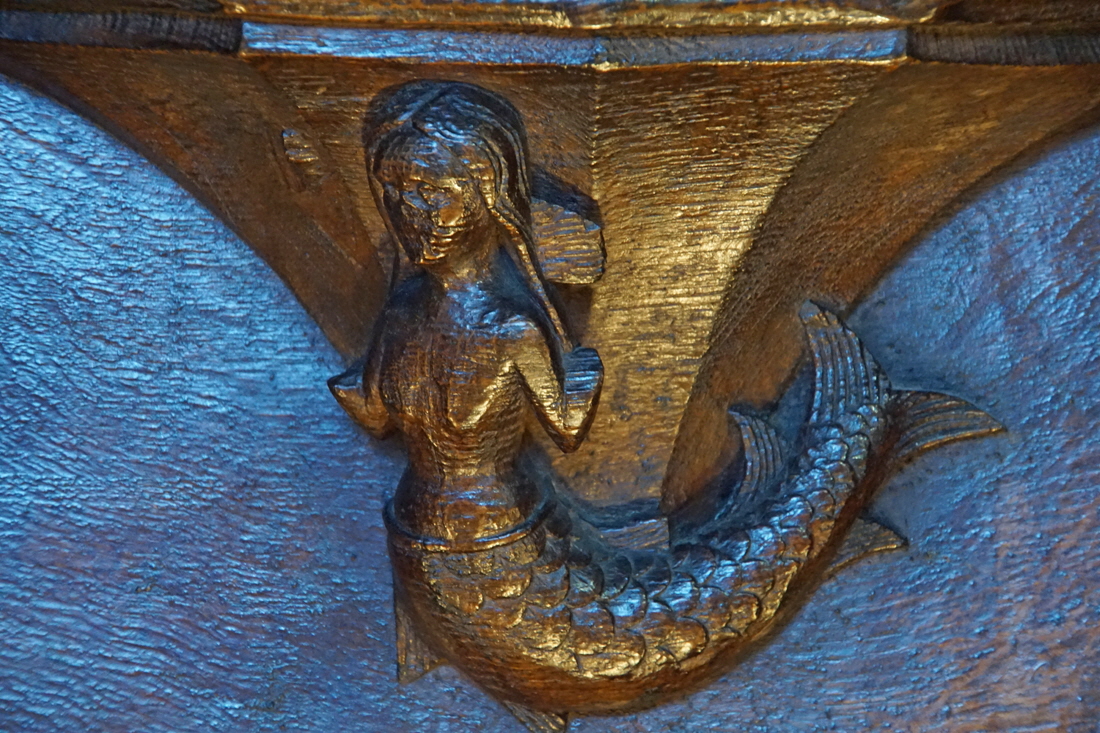 |
||||||||||||||||||||||||||||||||||||||||||||||
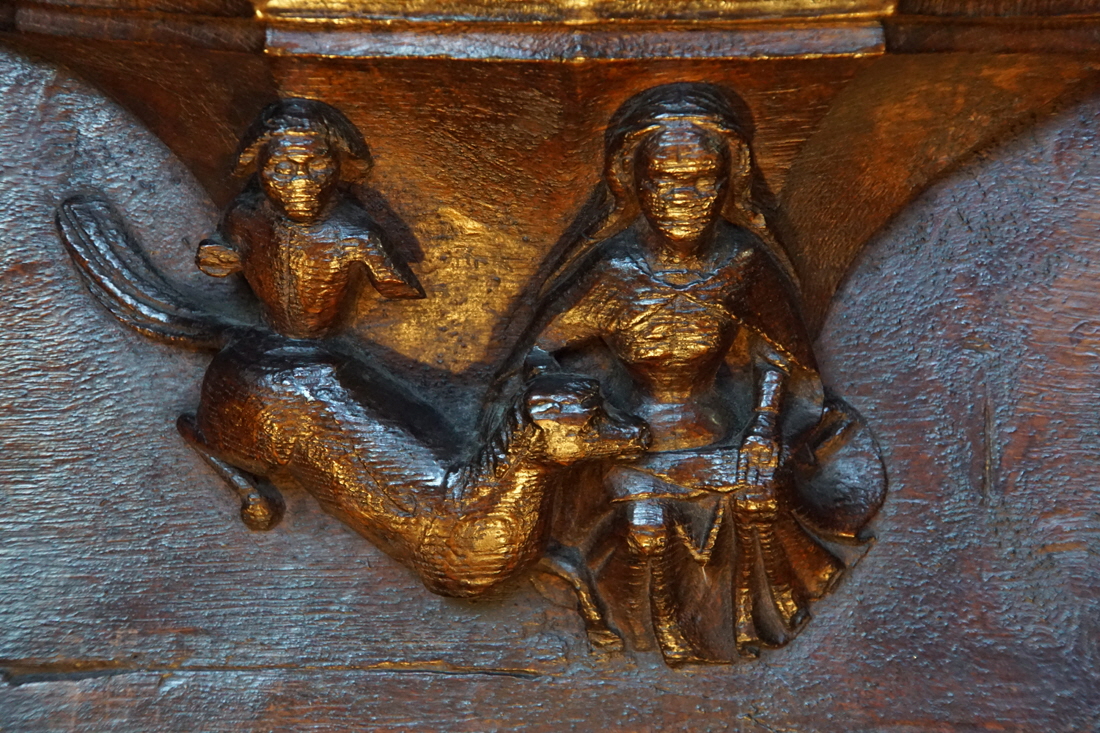 |
||||||||||||||||||||||||||||||||||||||||||||||
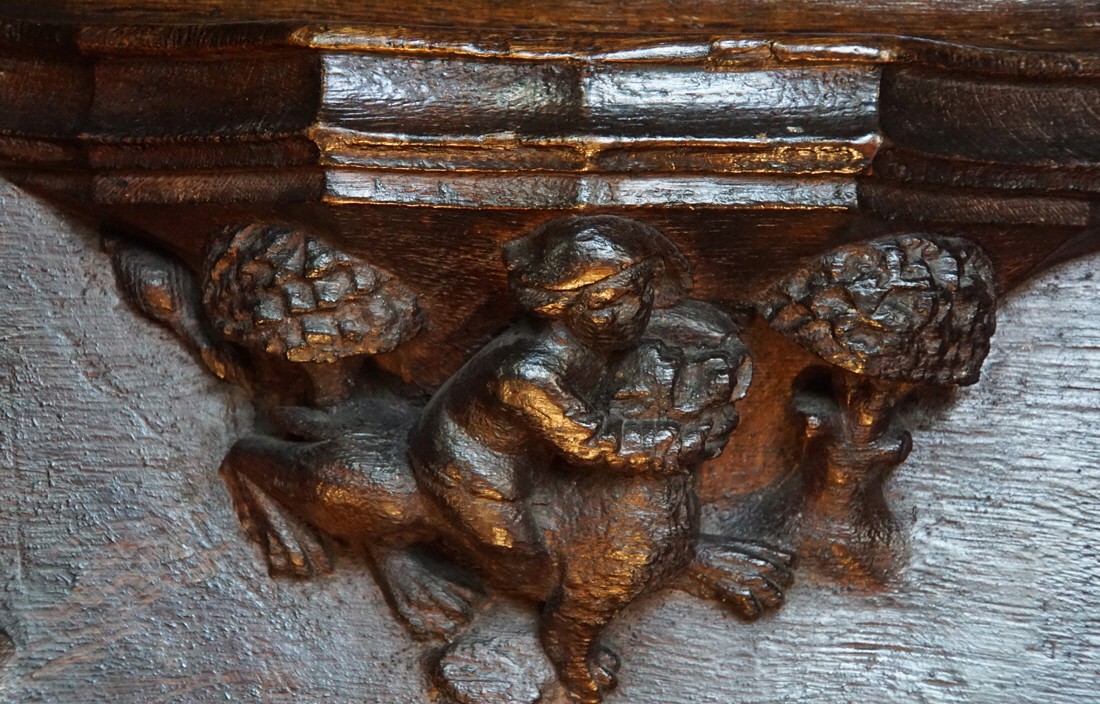 |
||||||||||||||||||||||||||||||||||||||||||||||
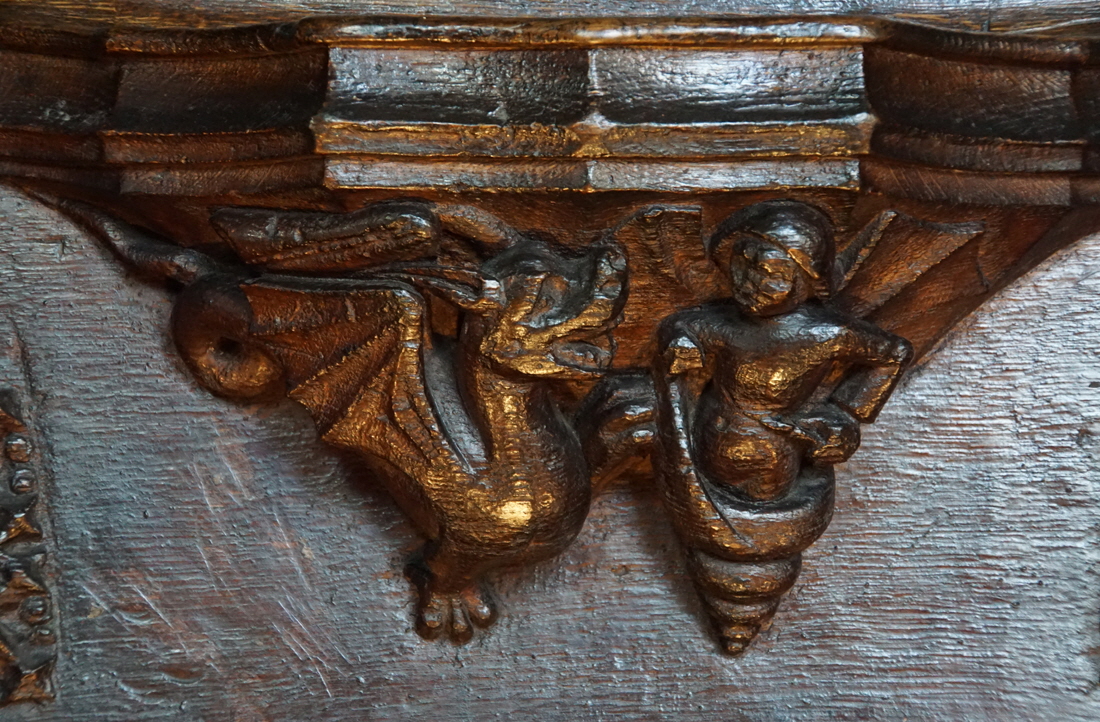 |
||||||||||||||||||||||||||||||||||||||||||||||
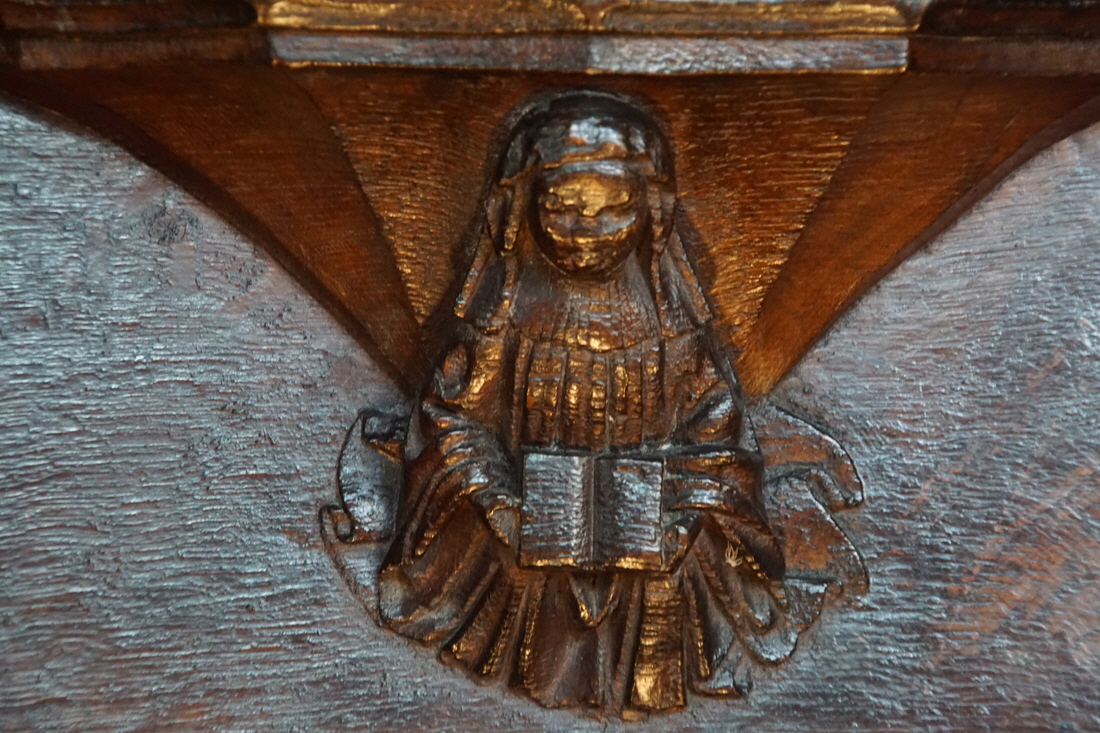 |
||||||||||||||||||||||||||||||||||||||||||||||
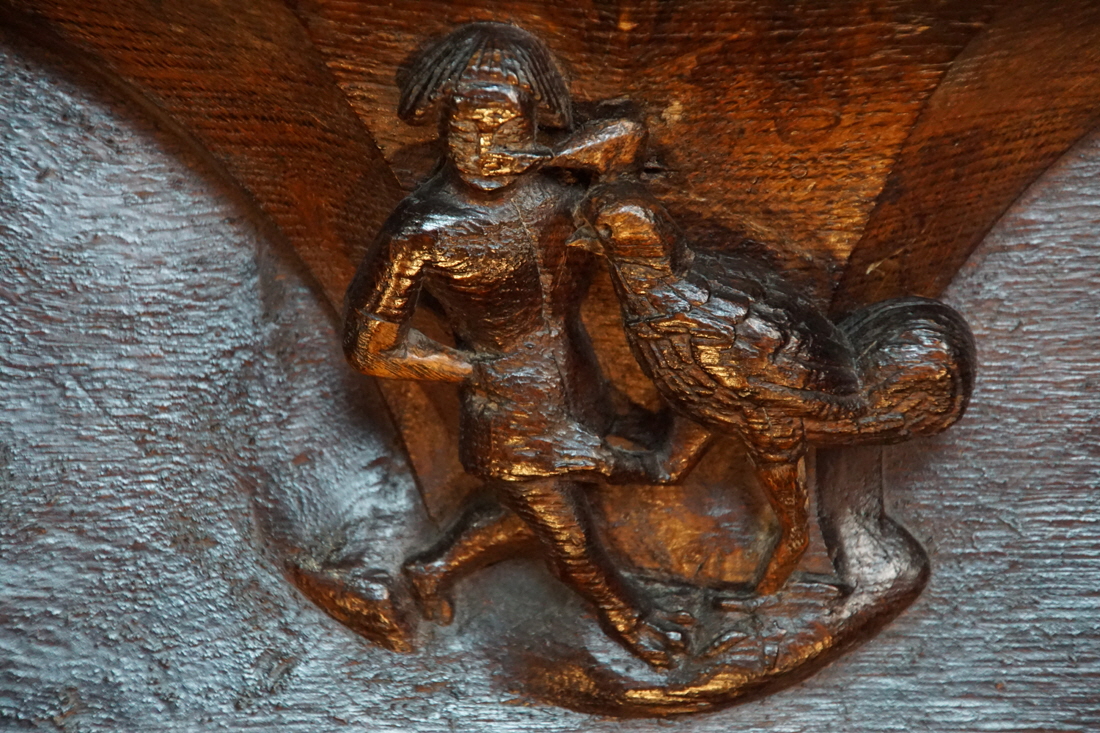 |
||||||||||||||||||||||||||||||||||||||||||||||
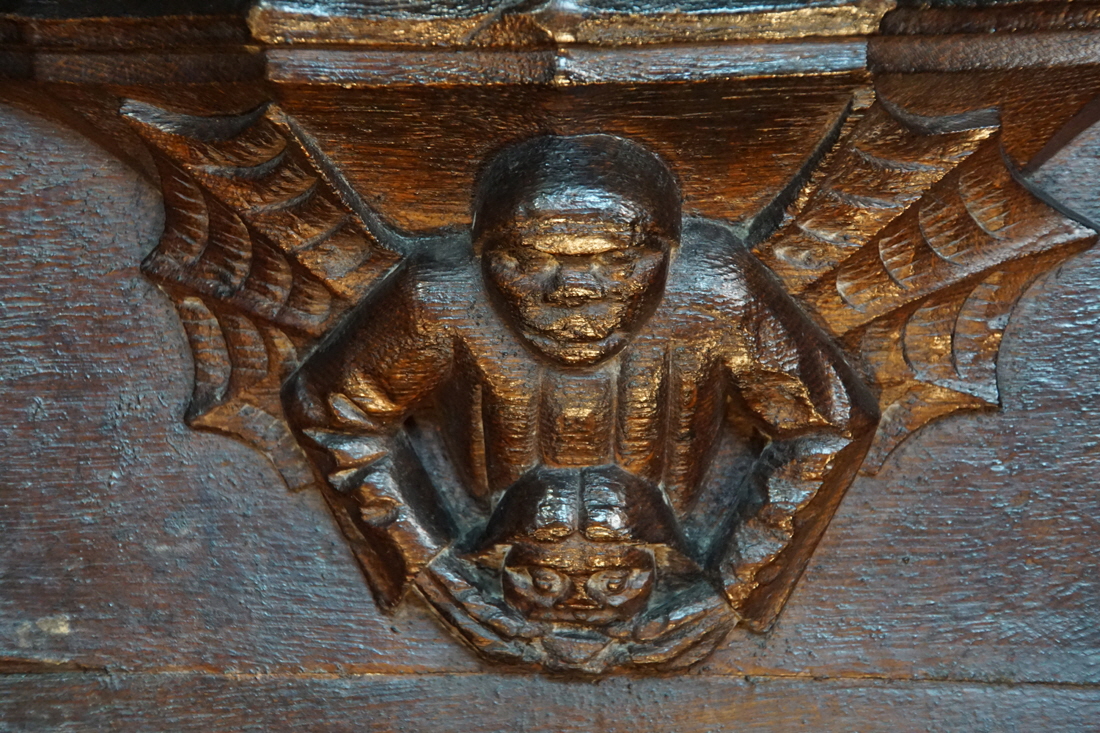 |
||||||||||||||||||||||||||||||||||||||||||||||
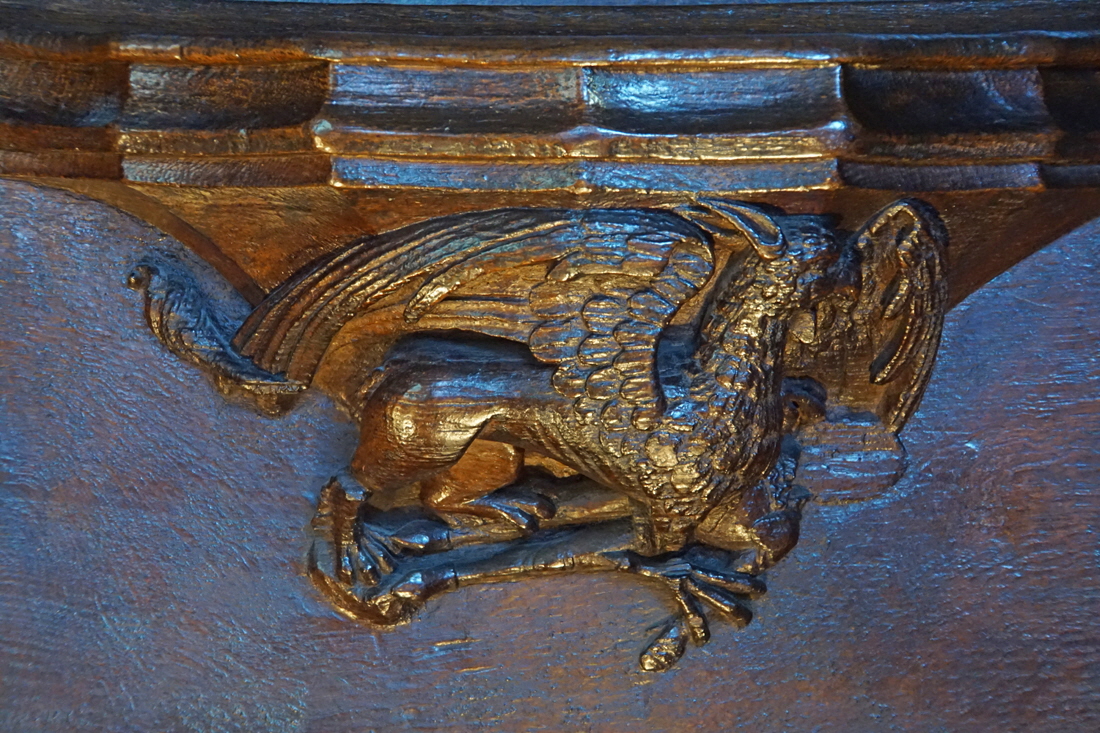 |
||||||||||||||||||||||||||||||||||||||||||||||
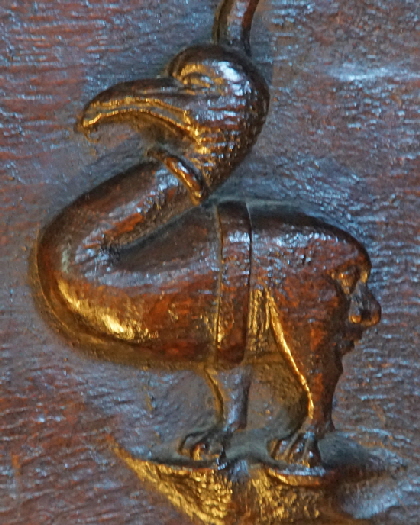 |
||||||||||||||||||||||||||||||||||||||||||||||
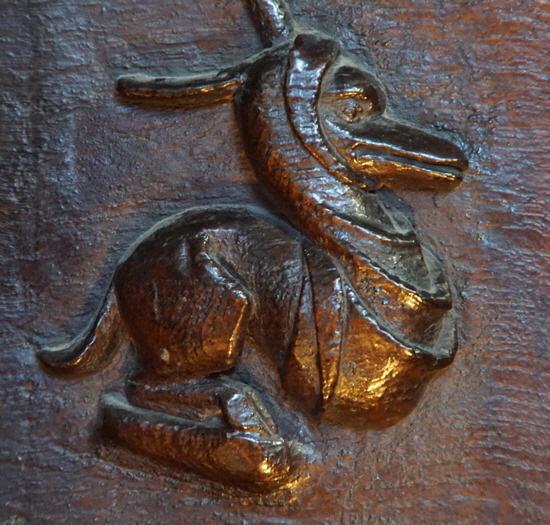 |
||||||||||||||||||||||||||||||||||||||||||||||
 |
 |
|||||||||||||||||||||||||||||||||||||||||||||
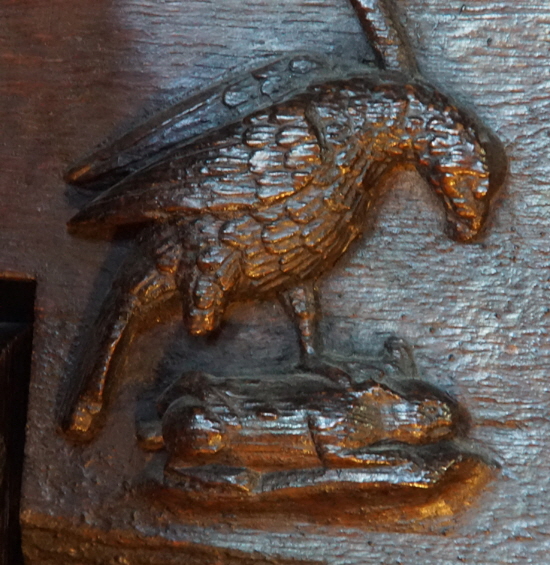 |
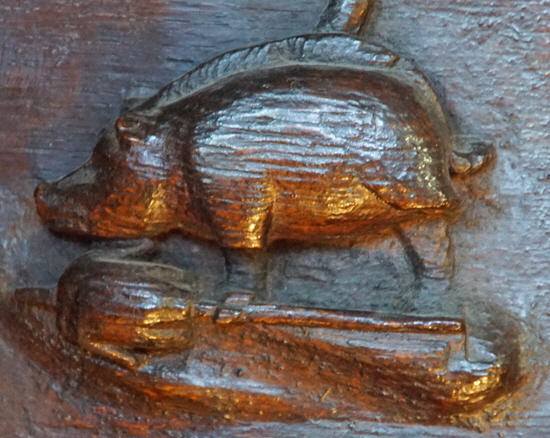 |
|||||||||||||||||||||||||||||||||||||||||||||
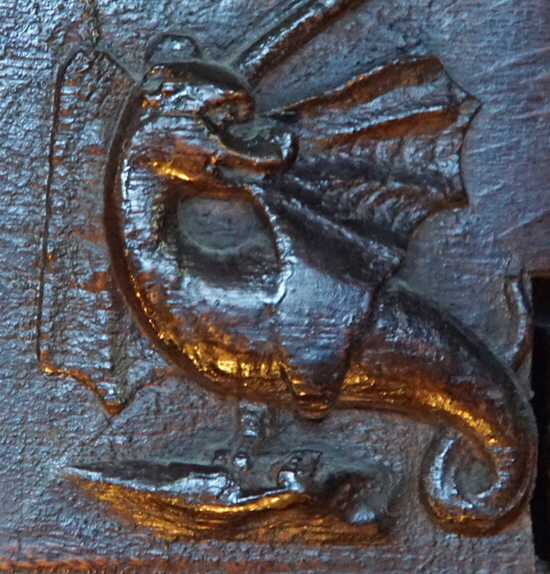 |
||||||||||||||||||||||||||||||||||||||||||||||
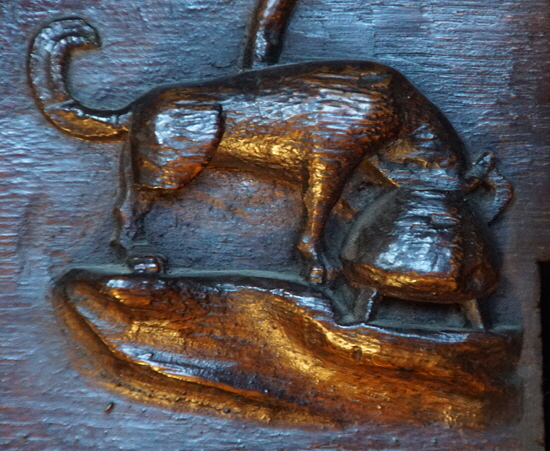 |
||||||||||||||||||||||||||||||||||||||||||||||
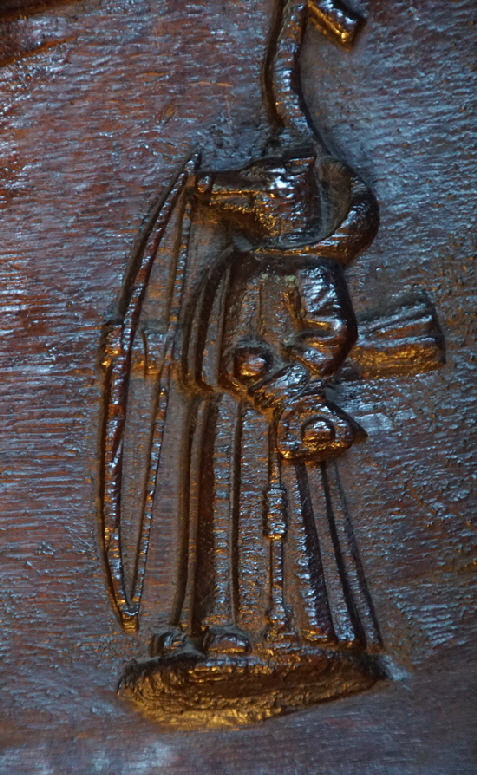 |
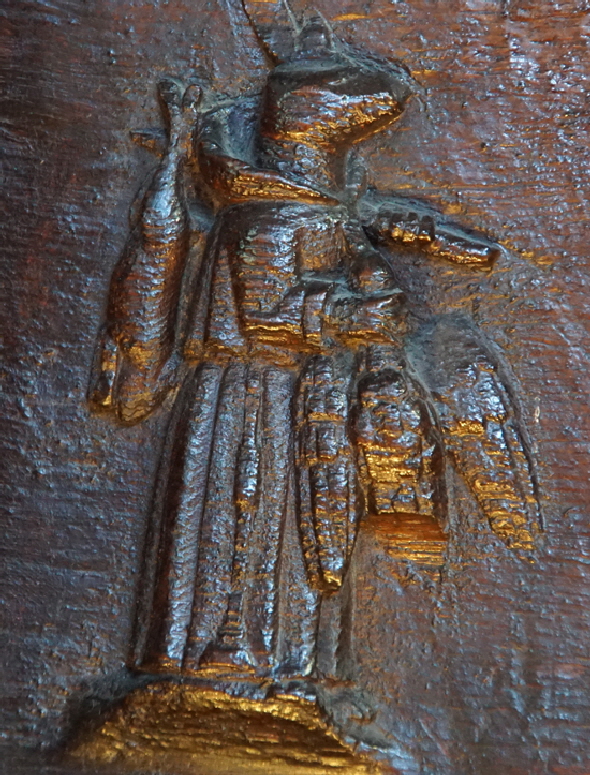 |
|||||||||||||||||||||||||||||||||||||||||||||